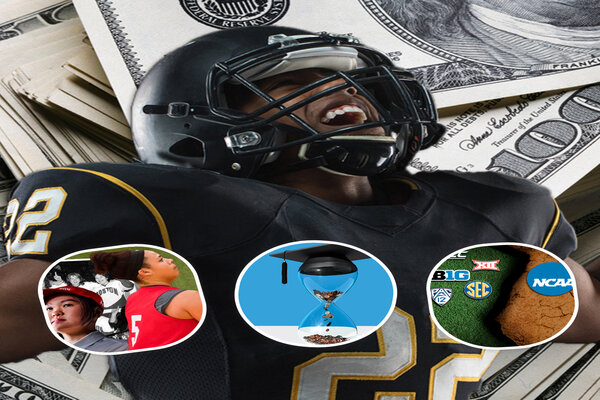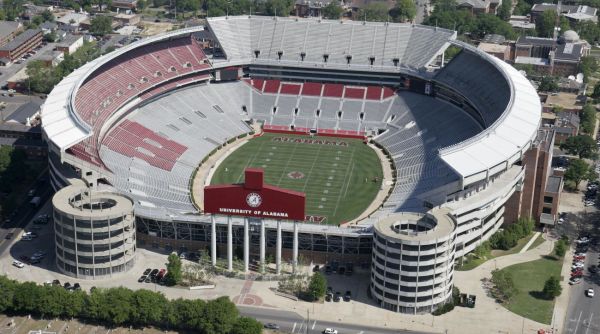When the NIL madness began and we saw the reported amounts of money some players in women’s and men’s college athletics were making by leveraging their brand and being allowed to deal one-on-one with corporate investors under a “soft” and often unenforceable guideline of rules, the game changed right in front of our eyes.
For years, the NCAA was known as a predatory governing body that generated billions for itself, coaches and university treasure chests off the backs of student-athletes who had to follow a strict and confusing guideline of rules that had many walking a highwire act trying to remain eligible while risking life and limb on the field for this notion of an education that will lead to a lifetime of success.
The introduction of the NIL changed all of that. The ruling was a proverbial F-u to the NCAA, a body that had controlled the chessboard and the safe in college athletics for so long.
Players were free to actually capitalize off of their talents, unconfined by the rules that kept them financially broke while coaches, athletics directors and administrators lived in million-dollar mansions.
Shouts to Ed O’Bannon and the original pioneers and warriors who battled for justice in court for years and years so athletes could bask in this moment.
With NIL running rampant, legendary coaches stepping away from the game unenchanted with the new way of doing business and recruiting and the NCAA losing control, it was only a matter of time before they came up with a plan to regain that lost control and be able to have a say in where the money is going and how it is spent.
The only way to achieve that was to totally go against the grain, destroy their holy grail of college culture and philosophy and start over, basically admitting that college sports at its highest levels is purely a business and the student athletes are commodities that need to be compensated for their contributions to the economic strength of the school and the sport itself.
NCAA and Power Five Conferences Agree On $3B Settlement, Revenue Sharing Plan
The nearly $2.8 billion settlement that has been approved by the NCAA and the nation’s Power Five conferences is believed to be a historic step toward a more stable and professional model for a college sports landscape that is ever-evolving and generates billions in revenue.
The plan calls for paying damages to thousands of former and current college athletes who claim that now-defunct NCAA rules prevented them from earning endorsement money. Players who have already filed legal claims against the NCAA are reportedly first in line.
How Does The Settlement Work ?
Under the settlement, $2.77 billion in damages will be paid over 10 years for approximately 14,000 claims dating to 2016. The original plaintiffs included former Arizona State swimmer Grant House and current TCU basketball player Sedona Prince.
So the first part is righting some wrongs with back pay for services rendered and mansions purchased.
Student-Athletes Finally Getting Paid In A Real System
With that handled, the NCAA can move onto its future meddlings with a clear conscience.
The real bombshell within the deal is the creation of an inaugural revenue-sharing system for college athletes, which will impact hundreds of schools across the country as early as fall 2025.
The Big Ten, Big 12, ACC and SEC will be making the strongest investment, according to the AP, because the settlement includes a proposed revenue-sharing system that will allow schools to commit up to $21 million per year to be paid directly to athletes. The overall commitment, including damages, is expected to be about $300 million per school, spread across the 69 universities over 10 years.
A total revamping of the NCAA rule book will probably take place.
How Is Money Distributed?
Under this revolutionary deal, the NCAA will cover 41 percent of the $2.77 billion total, with the biggest Division I conferences (the ACC, Big Ten, Big 12, Pac-12 and Southeastern) accounting for 24 percent. Each of its schools will commit about $20 million per year for 10 years to be paid directly to athletes.
The the other five major college football conferences (American Athletic, Mid-American, Conference USA, Mountain West ands Sun Belt) are on the tab for 10%.
According to reports, conferences that compete in the second tier of Division I football, the Championship Subdivision, would cover about 14 percent and the non-football D-I conferences would be on the hook for 12 percent.
Smaller Schools Get Shafted By New Revenue-Sharing Deal?
Under this new system, money that would normally be distributed to 352 Division I schools will instead be withheld.
So while the rich get richer essentially and are now part of a huge revenue-sharing situation where the little guys get less support from the NCAA and have to scramble for peanuts, there are two major dilemmas that the NCAA will face sooner than later.
About $1.6 billion of the money the NCAA is pledging (or recycling) will be from withheld distributions to member schools — money that would normally be sent to the schools by the NCAA, according to reports.
Withheld distributions from the Power Five conferences are slated to cover 40 percent of that $1.6 billion. The other 27 Division I conferences, currently comprising 283 schools, will cover the other 60 percent.

While the Power Five schools get the most money from the NCAA and generate the most revenue on their own, this is a win-win for them.
The conferences that do not play big-time football and the ones who rely on basketball as a driving revenue sport and recruiting tool are far more reliant on those NCAA bags to support much smaller budgets.
According to Sports Illustrated, one administrator administrator said that in some smaller Division I conferences, NCAA money account for more than 50 percent of a school’s athletic revenue, whereas at most power conference schools the NCAA money is extra, accounting for less than 10 percent of athletic revenue.
Non-Bowl Subdivision Conferences Get Screwed
Leaders of the smaller conferences sent multiple memos to the NCAA to raise concerns, but like their pockets, their voices are too small to be heard when big boys are conducting business.
In one letter, obtained by the AP on Monday, the non-Bowl Subdivision conferences said they support the need for a settlement.
“However, as commissioners of non-defendant Division I conferences, we do not support the current model proposed by the NCAA for allocating back damages, which unreasonably impacts our conferences,” the commissioners wrote.
Smaller schools see this as the beginning of phasing out many of their athletic programs due to an inability to fund or a need to allocate funds elsewhere.
How Does Title IX Affect This New Deal?
According to a story in WSJ on NCAA revenue-sharing: “The settlement doesn’t lay out how schools should distribute this money to their athletes. It’s possible that the teams that generate the most revenue – football and men;s and women;s basketball – would receive the most.
However, several legal experts have suggested that such a mode might violate Title IX, the federal statue (implemented in 1972) that calls for opportunities, scholarships and benefits to male and female athletes.
While necessary, the mandatory allocations towards often less lucrative women’s teams have caused men’s programs to cut back on teams as well.
It’s always a domino effect and nothing is written in stone. Expect more lawsuits like the one Jadan Rashada just levied against Flrida state for reneging on a alleged $13.85 million NIL deal, which he claims they had no inventions of respecting, but cost him $9.5 million in a deal with Miami.
Expect nobody to be totally happy but the people who are getting paid. The saga continues.



